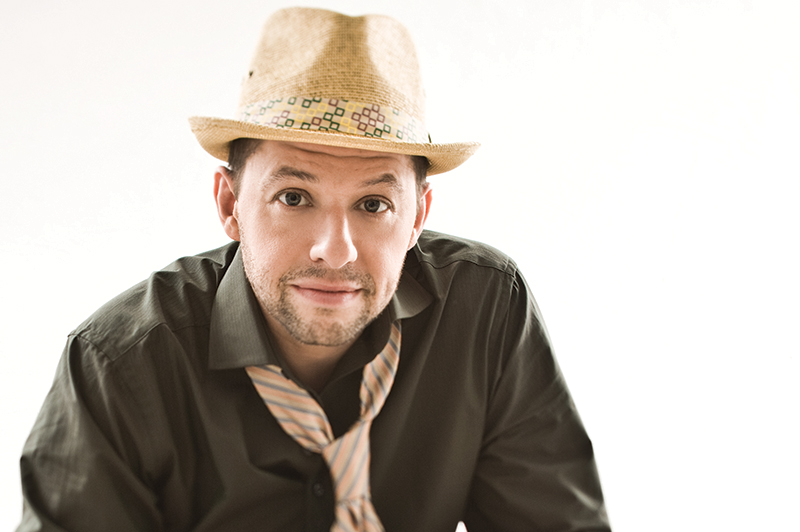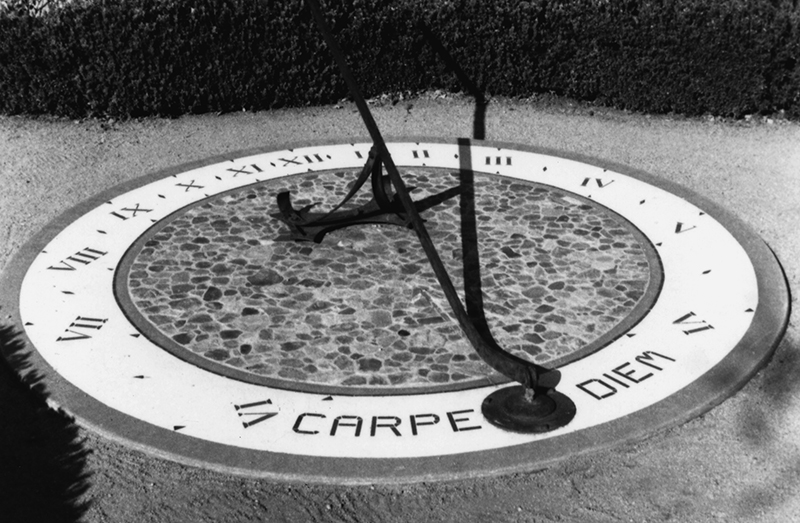
A Gem Among Us
Discover the beauty and rich history of Orcutt Ranch Park
-
CategoryPeople
-
Written byJudith A. Stock
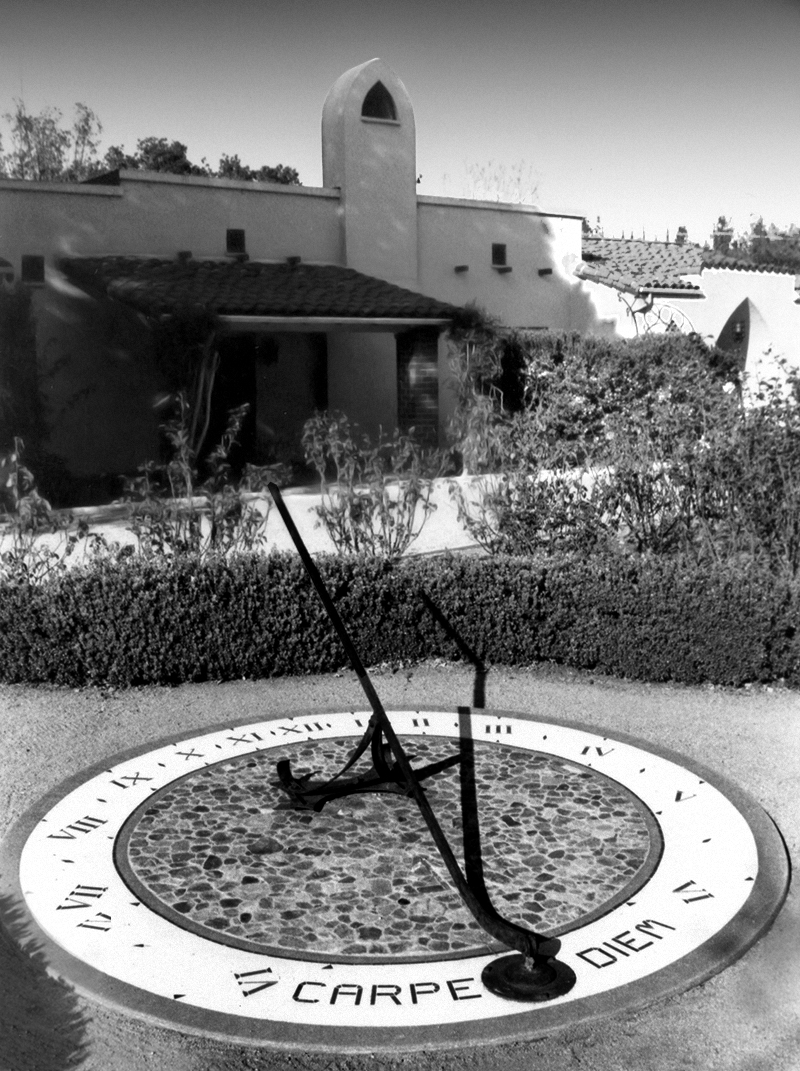
DIAL IN A large sundial in the front courtyard of the main house is inscripted with “Carpe Diem,” which means “Seize the Day.”
Photographs courtesy of CSUN Oviatt Library
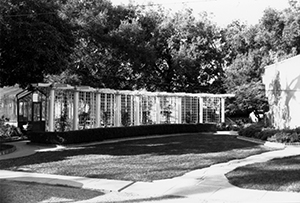 On a warm, lazy fall afternoon, exploring the hidden treasures of the San Fernando Valley can be an unexpected delight.Orcutt Ranch Park is one of them. No crowds, no lines, no parking hassles. Instead, eye-pleasing landscapes, flowers in full bloom and charming paths that meander along a creekbed blanketed by tree canopies.
On a warm, lazy fall afternoon, exploring the hidden treasures of the San Fernando Valley can be an unexpected delight.Orcutt Ranch Park is one of them. No crowds, no lines, no parking hassles. Instead, eye-pleasing landscapes, flowers in full bloom and charming paths that meander along a creekbed blanketed by tree canopies.
The majestic trees alone are worth a visit. A must-see relic is the prominent 700-year-old oak tree that stands near the back of the park. There are also rattan and sago palms, Southern and Purple Lily magnolias, box elder and dogwood trees.
Orcutt Ranch is also home to more than 500 rose bushes, with blooms that last into fall in a kaleidoscope of colors.
The stately adobe structure on the property was built in 1926 by William Warren Orcutt, an early oil magnate, and his wife, Mary Logan Orcutt. Rancho Sombra del Roble, as it was originally called, means “ranch in the shade of the oak.” The architect, L.G. Knipe, is known for designing some of the original structures on the campus of Arizona State University at Tempe.
“The ranch originally consisted of 210 acres of cattle and citrus orchards,” says Rose Watson with the Los Angeles Department of Recreation and Parks. “Originally Orcutt Ranch comprised much of what is today Canoga Park.”
In 1965 the property was designated a historical monument by the Los Angeles Cultural Heritage Commission, and the city acquired it a year later.
Scattered among the trees, citrus groves and flowers are stone statues, brick walkways, grottos, urns, benches and stonewalls. Quiet contemplation is encouraged here with multiple rest areas. A graceful Italian marble group of three muses is the focal point of the pergola overlooking the rose garden, the site of many wedding ceremonies today.
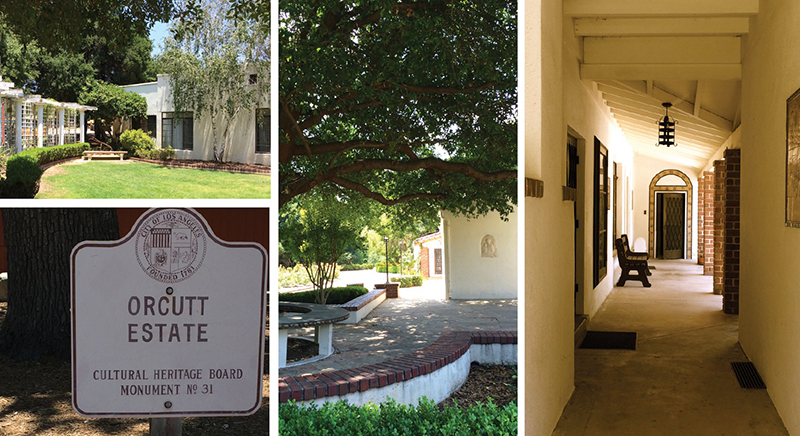
Photographed by Judith A. Stock
It’s not difficult to find details that make Orcutt Ranch Park truly original—from the arrowheads embedded in the brickwork of the main house to a veranda decorated with handmade Mexican tile and Native American peace symbols represented by a swastika over the doorways.
“When the Orcutt residence was completed, the swastika still retained its traditional meaning of well-being and good fortune; it reflected both the owners’ and the architect’s interest in the architectural styles, crafts and symbols of the American Southwest,” says Rose. “When positioned at the entrances to the home and gardens, the swastika expressed wishes of good fortune to those who entered and is one of the world’s oldest known graphic symbols.”
W.W. Orcutt came to California in the early 1900s, eventually becoming vice president of Union Oil Company of California. He is known for his contributions to paleontology, which brought the fossils of the La Brea Tar Pits to the attention of the scientific community.
In 1947 Mary Orcutt purchased two acres of peach orchards in Canoga Park to build a community center for the families working on her ranch and the neighboring farms and ranches. It still operates today, known as the Guadalupe Center.
Plan a Visit
Orchards
Orcutt Ranch opens its orchards to the public two weekends per year.
Pick grapefruit in January and oranges in July.
Tours
Tours of the house and gardens are conducted the last Sunday of each
month (except July and August) from 2 p.m. to closing at 5 p.m.
Hours
The park is open seven days a week from dawn to dusk and is available
for private parties, weddings and gatherings by permit.
Orcutt Ranch Park | 23600 Roscoe Blvd., West Hills | 818-346-7449 | laparks.org











